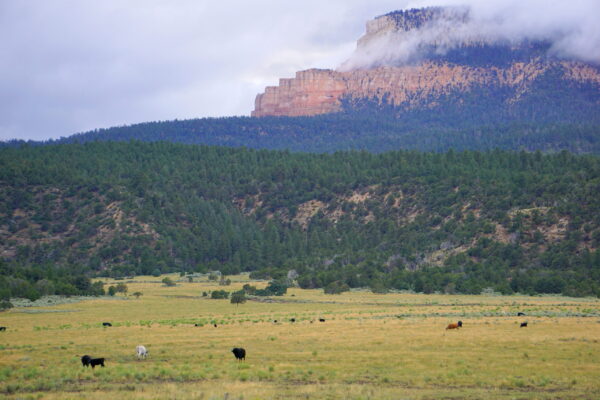Sometime toward the tail end of the summer in 2022, a one-page manifesto started making the rounds in Escalante, carried to doorsteps by neighbors and accompanied by a blank signature page.
The document was titled “A Manifesto for Local Stewardship.” By the end of that September, organizers had gathered a total of 258 signatures, all of which but a handful were of Escalante residents.
At the time of the 2020 Census, Escalante counted 618 adults total.
The Manifesto drew a distinction between the beliefs of modern-day conservationists and traditional land users, which it said believe that “Earth was created for the benefit of mankind, and that the purpose of conservation is to magnify its long-term yield for beneficial use.”
The document also contended that locals are the most qualified to be the stewards of the land because they not only understand it the most, but because they are “the ones who care the most for the land.”
It stated that beneficial use of public land is protected under the multiple-use mandate of most federal land. It also opposed the “colonialism” of outside influences (particularly from special interest groups) trying to control the land, and ended by stating that local land stewards are ultimately accountable to God for their stewardship.
The idea for the Manifesto came out of discussions between Wade Barney, who once served as Escalante’s mayor, and local ranchers Todd Phillips and JS Butler. At the time, Phillips had been irked by what he saw at an event hosted by conservationist group Grand Staircase Escalante Partners — that they presumed to have broad support from the community. He was concerned that the group might be misrepresenting the beliefs of most residents to people living outside the area.
“What bothered me is that they could come into this town and start ‘educating’ people to their way of thinking,” Phillips told The Byway. “What makes you think you know more about this country and how to protect it than we do?”
Phillips and Butler initially asked Barney if a letter could be drafted and signed by community members, and delivered to the Forest Service, the BLM and conservationists to read. By the time the Manifesto draft was finished, Phillips said the result was unexpected. “The letter was way different and more in depth than what we expected,” he said, but also added that he was pleased with the result.
Barney said that the original idea for the letter was to say that “Partners wasn’t speaking for everybody.” But the letter turned out to be more than that.
The Byway editors have known about the Manifesto since last summer, but it isn’t until now that we have been able to address it in the paper. It is an important look into the beliefs of many locals and we felt it deserved special treatment, as far as looking into its claims and explaining some of its ideas. For that reason, we now present the Manifesto in its original on Page 5.
We have also included with it a series of eight articles discussing different parts of the Manifesto, written by a variety of authors.
Beyond the original, narrow scope of the “letter” idea, these old-timers think that the public has something to gain from reading the Manifesto. For Phillips, it was a step in encouraging people who care to stand up and “support the cowman a little bit,” adding that when the environmentalists voice their opinions so loudly, it’s important to speak out. “If you support multiple use on public land, get involved and comment on this stuff.”
Barney believes the general public should see the Manifesto. “Everyone from high school kids on up, including the other side, whether opposed to multiple use or not, needs to know how we feel,” he said.
Indeed, we feel this Manifesto should be seen by the public, whether they feel decisions on public lands affect them or not. The Manifesto may not adequately represent the views of the modern conservationist, as it calls them, but does represent the beliefs of a good chunk of Escalante residents.
We encourage you to read it as well. It may not persuade you, but we hope it will provide some understanding into others’ views. We also hope that it will cause some introspection into what your own beliefs are on beneficial use and local stewardship.
– The Byway
Feature image caption: Cows graze on a Dixie National Forest allotment at the west end of Upper Valley north of Henrieville, August 21, 2023. Grazing is just one of several authorized uses of federal land and is protected by Congress under the multiple-use mandate. This grazing lease between Escalante and Henrieville is one of the things the manifesto is trying to protect.

